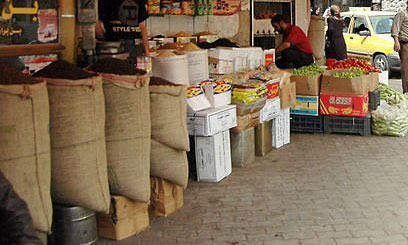According to the latest World Bank’s quarterly ‘Food Price Watch report’, food prices are expected to drop this year on account of increased supplies, weaker consumer demand and projected declines in the cost of energy.
“Expectations remain relatively favourable for declines in the price of energy, including crude oil, and minerals in an uncertain global economy dominated by a persistent debt crisis and a slowdown in the demand growth in China,” the World Bank observed.
According to the Food and Agriculture Organisation (FAO), the stock-to-use ratio which is the grain supply measured against grain demand for most crops is estimated to rise this year.
“With better-than-anticipated production in2011 and strong forecasts for 2012 supplies, global carry-over stocks are also expected to build up,” the report documented.
Already, the US Department of Agriculture has revised upward its estimated beginning stocks for 2011/12 for wheat (by 0.7 percent), maize, (0.8 percent) and rice (0.6 percent) from its previous estimates in December, the report stated.
But while the US government recently eliminated bio fuel subsidies, a move that is likely to contribute to a reduction in the diversion of agricultural production for non-food purposes, its effect on food prices is not yet clear.
“FAO projections indicate increases in the stock-to-use ratio for wheat, which reaches a level of 28 percent, and in the stock-to-use ratio for rice up to the level of 32 percent in 2012,” the report further read.
The increased supplies at the international level were also reported in 2011 and coupled with uncertainty about the global economy led to an eight percent decline in food prices.
However, this reprieve was not extended in many developing countries which continued to record high prices for most staple foods.
Kenya was among the countries where food prices remained high for the most part of 2011, threatening to worsen food insecurity conditions.
According to the report, maize prices for instance increased by 117 percent a situation that left millions of people at risk of malnutrition and hunger.
The surge was however not limited to Kenya but was seen in some of its neighbouring countries too.
“Wheat prices were up 88percent in Belarus and 23percent in Ethiopia; rice prices increased 81 percent in Uganda and 56 percent in Malawi; maize was up 117 percent in Kenya and 106 percent in Mexico; and sorghum increased 57 percent in Burkina Faso and 28 percent in Ethiopia, “the report documented.
In spite of the favourable outlook, the upward price pressures are expected to remain volatile and this has prompted the World Bank to call upon governments particularly those in Africa to develop mechanisms to help their citizens cope.
“Governments must step-up to the plate and implement policies to help people cope,” the World Bank Group’s Vice President for Poverty Reduction and Economic Management Otaviano Canuto challenged.
Such measures could include school feeding programs, conditional cash transfers, and food-for-work programs, Canuto added.
On its part, the World Bank has developed several initiatives that ‘help to put food first’ in developing countries.
These include the provision$1.88 billion to save lives, improve social protection, and foster economic recovery and drought resilience.
Through its investment arm the International Finance Corporation, the Bank is providing a $4 billion risk management product to protect farmers, consumers from volatile food prices.



































